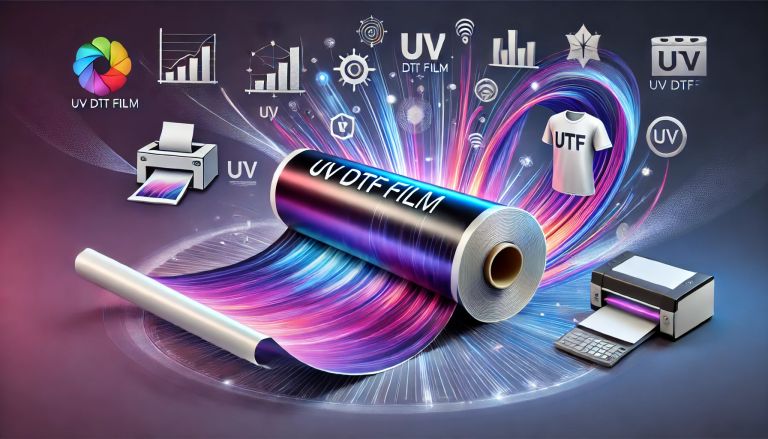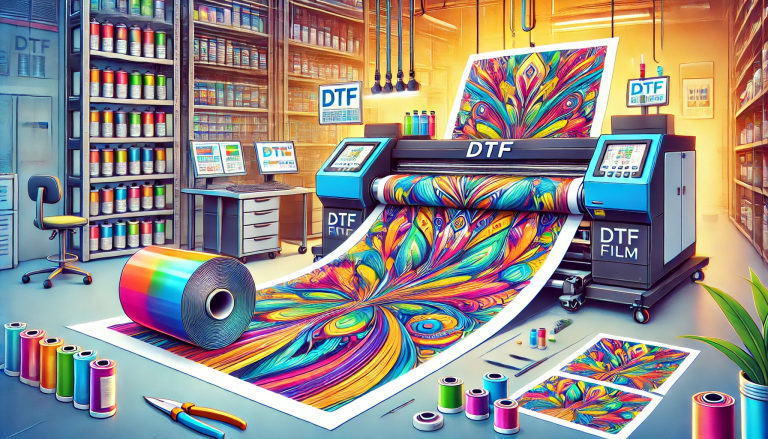“Experience the Future of Direct-to-Fabric Printing with the Epson F2100!” -MAXDTF- DTF heat transfer pet Film Manufacturer, DTF Film warm peel Factory, Made in China
In the rapidly evolving world of digital textile printing, the Epson F2100 has emerged as a popular choice for many businesses and individuals looking to produce high-quality prints on various fabrics. One of the key components that enable this technology to function effectively is the DTF (Direct to Film) film. This article will delve into what a DTF film is, its role in the Epson F2100 printing process, and why it is an essential element for achieving exceptional print results.
Understanding DTF Printing
Before we can fully comprehend the role of DTF film, it is crucial to understand the broader context of DTF printing. DTF printing is a versatile and innovative printing method that allows for the direct transfer of designs onto a wide range of fabrics. Unlike traditional direct-to-garment (DTG) printing, which prints directly onto the fabric, DTF printing involves a multi-step process that includes printing onto a special film, applying a powder coating, and then transferring the design onto the fabric.
The Epson F2100 is specifically designed to facilitate this process, offering a streamlined workflow that maximizes efficiency and print quality. The printer is equipped with advanced inkjet technology that ensures vibrant colors, sharp details, and long-lasting prints. However, the success of the DTF printing process hinges on the quality and compatibility of the DTF film.
What is a DTF Film?
A DTF film is a specialized material that is used as a medium for transferring printed designs onto fabric. It is a thin, flexible film that is coated with a layer that allows inkjet inks to adhere to it. The film is designed to be compatible with the Epson F2100 printer, ensuring that the ink is absorbed effectively and the print quality is maintained.
The primary function of the DTF film is to serve as a temporary surface for the printed design. Once the design is printed onto the film, a powder coating is applied to the surface. This powder acts as a heat-activated adhesive, binding the ink to the fabric when heat is applied during the transfer process. The film itself is then removed, leaving the design permanently affixed to the fabric.
Types of DTF Films
There are different types of DTF films available on the market, each with its own set of characteristics and benefits. The choice of film depends on the specific requirements of the print job, such as the type of fabric being printed on, the desired level of durability, and the overall print quality.
- Standard DTF Film: This is the most common type of DTF film and is suitable for a wide range of fabrics and printing needs. It offers good print quality and durability, making it a versatile option for many applications.
- High-Resolution DTF Film: Designed for detailed and high-definition prints, this type of film is ideal for complex designs that require fine lines and intricate details. It is often used in premium printing applications where accuracy and sharpness are paramount.
- Specialty DTF Film: These films are tailored for specific applications, such as printing on delicate fabrics or achieving unique textures and finishes. They may include features like enhanced flexibility, opacity, or water resistance.
The Role of DTF Film in the Epson F2100 Printing Process
The Epson F2100 printer is specifically designed to work with DTF films, ensuring that the printing process is smooth and efficient. Here’s a step-by-step breakdown of how the DTF film fits into the overall printing workflow:
- Design Preparation: The first step in the DTF printing process is to create or select the design that will be printed. This can be done using graphic design software, and the design is then prepared for printing by adjusting colors, resolution, and other parameters to ensure optimal results.
- Printing onto the DTF Film: The prepared design is sent to the Epson F2100 printer, which has been loaded with the appropriate DTF film. The printer uses its precision inkjet technology to print the design onto the film with high accuracy and vibrant colors.
- Application of Powder Coating: Once the design is printed onto the DTF film, a special powder coating is applied to the surface. This powder is heat-activated, meaning it will bind the ink to the fabric when subjected to heat during the transfer process.
- Transfer to Fabric: The film with the printed design and powder coating is placed on the fabric, and heat is applied using a heat press. The heat activates the powder, causing it to melt and bind the ink to the fabric. The DTF film is then peeled away, leaving the design on the fabric.
- Finishing: After the transfer process, the fabric may undergo additional finishing steps, such as curing or washing, to ensure the longevity and durability of the print.
Benefits of Using DTF Film with the Epson F2100
The use of DTF film in conjunction with the Epson F2100 offers several advantages, making it a preferred choice for many textile printing applications:
- Versatility: DTF printing allows for the creation of high-quality prints on a wide range of fabrics, including cotton, polyester, and blends. This versatility makes it suitable for a variety of industries, from fashion to home textiles.
- Durability: The heat-activated powder coating used in the DTF process ensures that the prints are durable and resistant to washing, wear, and fading. This makes DTF prints ideal for long-lasting applications.
- High-Quality Output: The Epson F2100’s advanced inkjet technology, combined with the right DTF film, produces vibrant, detailed, and accurate prints. This level of quality is crucial for applications where visual impact is important, such as in fashion or promotional products.
- Cost-Effectiveness: While the initial investment in the Epson F2100 and DTF film may be higher than some other printing methods, the long-term cost savings and efficiency make it a worthwhile option. The ability to print on a variety of fabrics without the need for special pre-treatments also reduces costs.
- Ease of Use: The Epson F2100 and DTF film work seamlessly together, creating a user-friendly printing process that can be easily mastered by both professionals and beginners.
Conclusion
In summary, a DTF film is a critical component in the DTF printing process, particularly when using the Epson F2100 printer. It serves as a temporary surface for the printed design, allowing for the transfer of high-quality, durable prints onto a wide range of fabrics. The versatility, durability, and high-quality output of DTF printing, combined with the advanced capabilities of the Epson F2100, make this a powerful solution for textile printing.
Whether you are a professional printer, a small business owner, or a hobbyist, understanding the role of DTF film and how it integrates with the Epson F2100 can help you achieve the best possible results in your textile printing endeavors. By selecting the right DTF film and following the proper printing process, you can unlock the full potential of your Epson F2100 and create stunning, long-lasting prints that meet the demands of today’s market.




